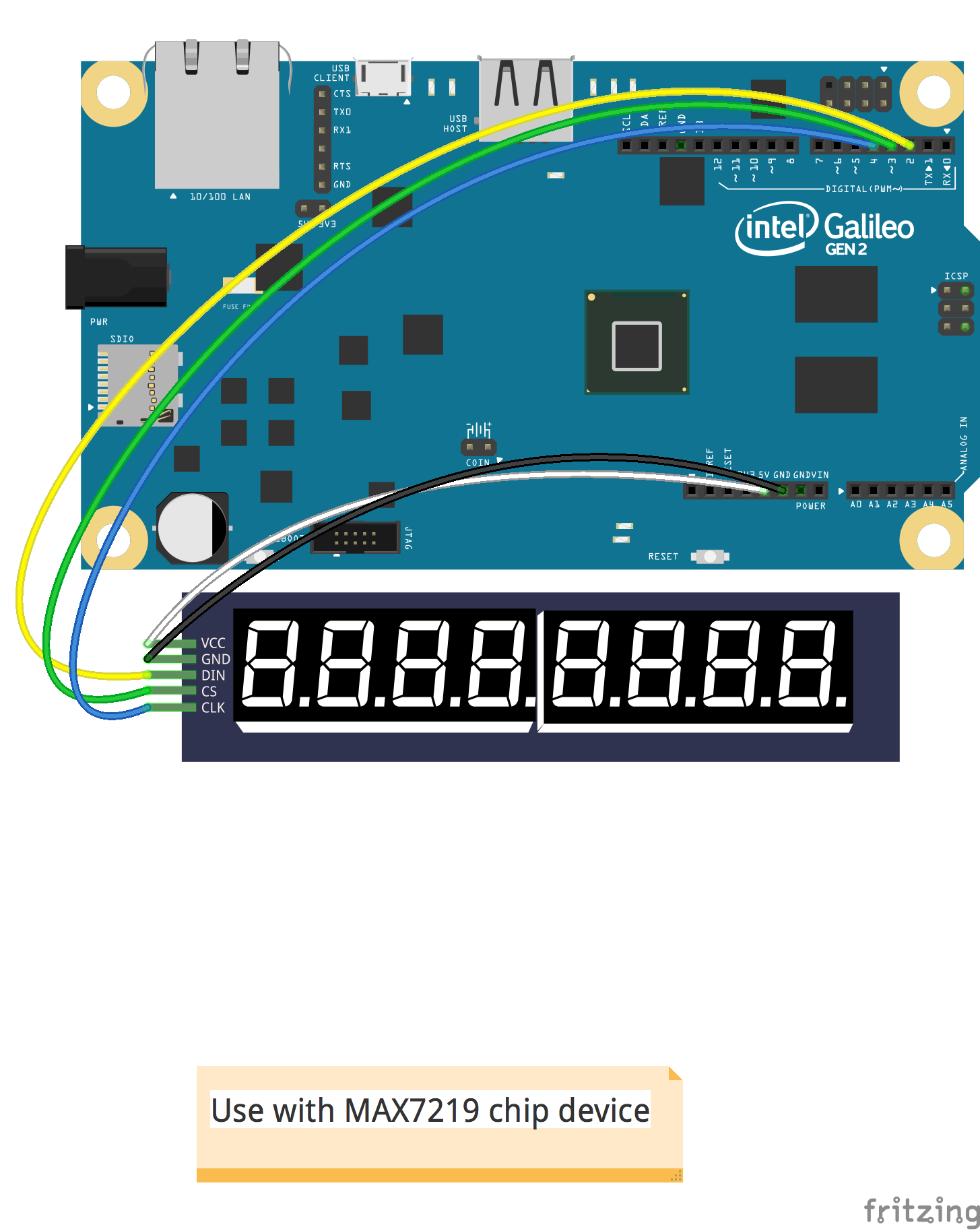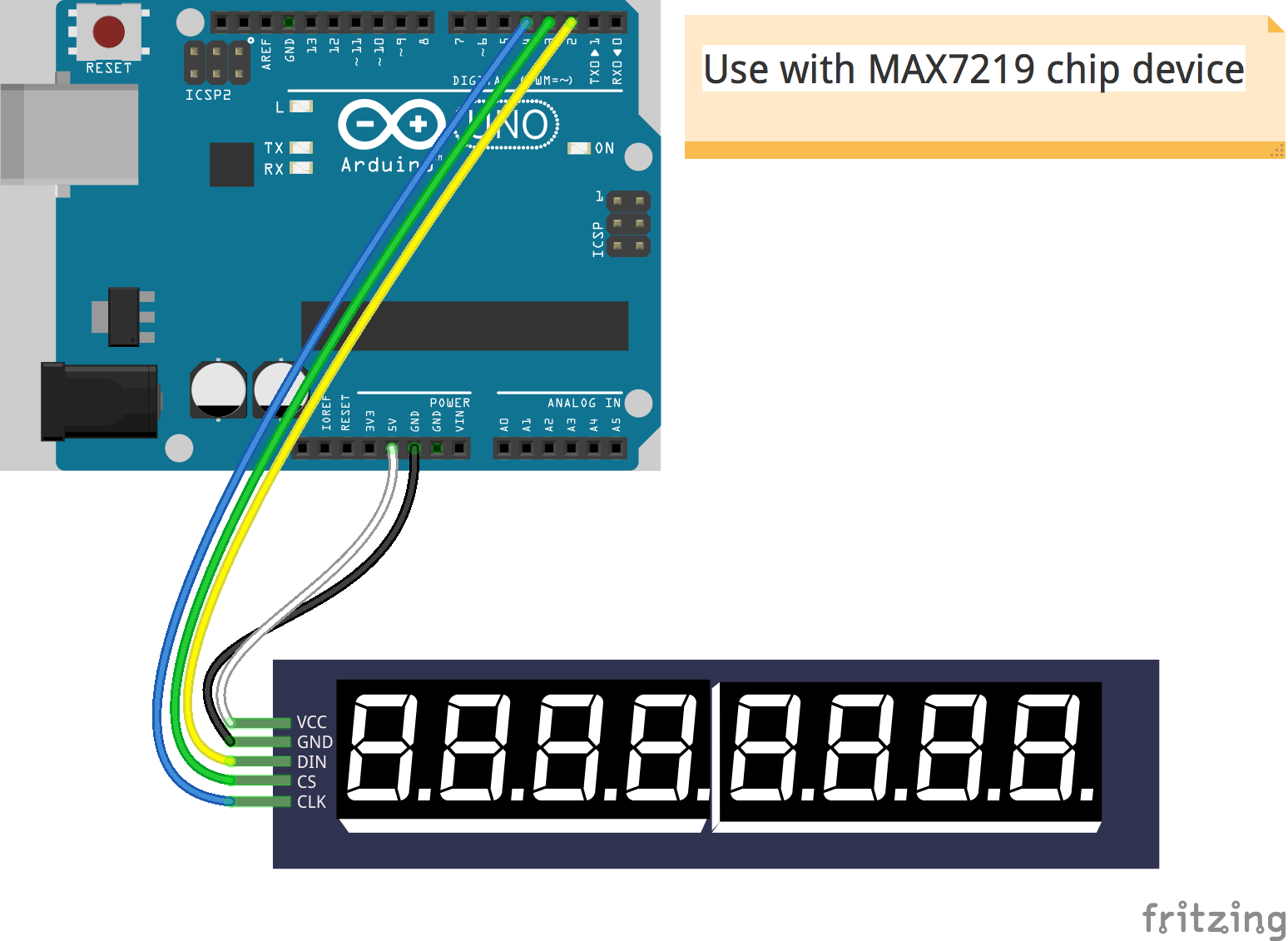Demonstrates using 7 Segment Digits and Intel Galileo Gen 2 to create a clock! This example can easily be ported to use any other supported platform.
Galileo Diagram

Fritzing diagram: led-digits-clock-galileo.fzz
Run this example from the command line with:
node eg/led-digits-clock-galileo.js
const moment = require("moment");
const { Board, Led } = require("johnny-five");
const Galileo = require("galileo-io");
const board = new Board({
io: new Galileo()
});
board.on("ready", () => {
var digits = new Led.Digits({
pins: {
data: 2,
cs: 3,
clock: 4,
}
});
setInterval(() => digits.print(time()), 1000);
});
function time() {
/*
The desired display looks something
like these examples:
02.25.54 P
12.30.00 A
moment doesn't have an option for
a single letter meridiem (nor should it,
that would be silly), so we need to
manipulate the string a bit to so that
it the string matches our desired display.
*/
return moment().format("hh.mm.ssA")
.replace(/([AP])M/, " $1");
}
Illustrations / Photos
Arduino Diagram

Fritzing diagram: led-digits-clock-arduino.fzz
Learn More
